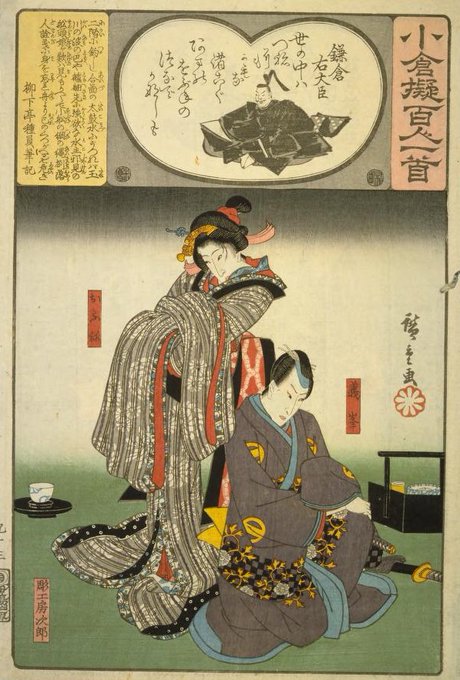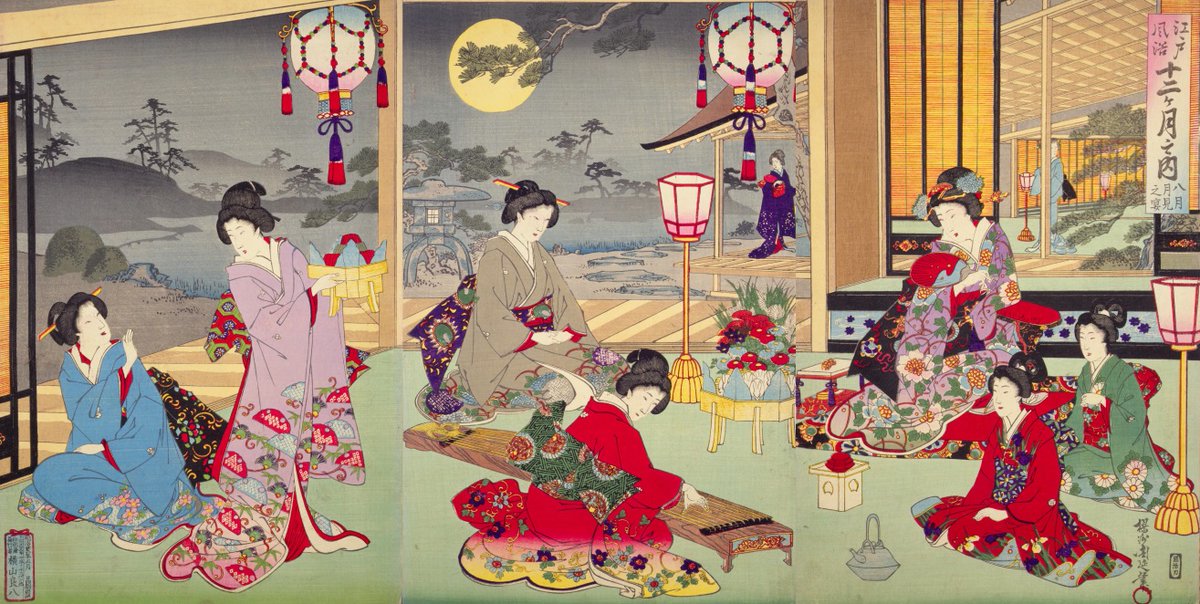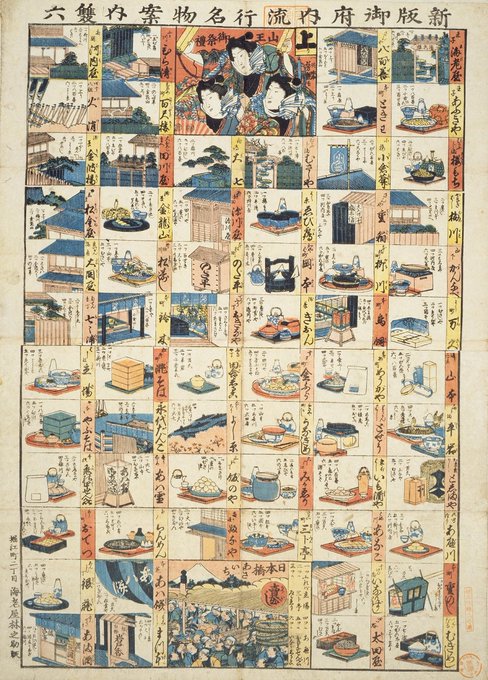ndldigitalのTwitterイラスト検索結果。 294 件
#鮎 は初夏に旬を迎え、なかでも6月と7月にとれる鮎は「若鮎」と呼ぶそうです。本日は鮎にまつわる作品をご紹介します!
こちらは楊洲周延が描いた『多摩川の鮎漁』の一部分。江戸時代、多摩川の鮎は将軍に献上され、特産品として知られていました。#ndldigital
https://t.co/huwIHDHdaC
秋の七草の一つでもある #桔梗 は、実際には6月頃から花を咲かせます。本日は桔梗にまつわる作品をご紹介します。
こちらは江戸時代につくられた『本草図譜』より、桔梗の花と根の図。桔梗の根は、古くから薬用に使われてきました。#ndldigital
https://t.co/TbCW9aWan0
#KawaseHasui (1883-1957), a landscape print artist, depicted Japanese nature in various seasons. #ndldigital https://t.co/k3uSYlV6ek
この謎の動物の横には「ロイアールト」の文字が。実はこの動物、原猿類の #スローロリス を描いたもの。1833(天保4)年にオランダ船から持ち込まれたのだそう。写本『外国珍禽異鳥図』より。
頭を抱えるように丸まる姿が何とも言えません。#ndldigital
The night before the beginning of Spring (around February 4) is #Setsubun (bean-throwing festival). On this night, the whole family shouts "Oni wa soto, fuku wa uchi! (Devils out, good luck in!)" and throws beans all over the house. #ndldigital
https://t.co/9KsbFluPzd
こちらの絵は「小倉擬百人一首」シリーズの一つで、#歌川広重 の作品です。#源実朝 が上部に描かれています。
実朝の「世の中は 常にもがもな 渚漕ぐ 海人の小舟の 綱手かなしも」という一首を元にした見立絵です。#ndldigital #鎌倉殿の13人
Have you ever heard of a dance called Bugaku? It is a dance accompanied by music that was introduced to Japan from China and Korea during the Nara and Heian period. Take a look at the colorful costumes of Bugaku! #ndldigital
https://t.co/8Nxaouer6z
#Ikebana is the art of #flowerarrangement which evolved in Japan, in which flowers and plants are arranged in a proper balance. People appreciate the beauty of their appearance and preciousness of life. Some examples from the Edo period at #ndldigital https://t.co/mjWbsRP3FJ
This is from a #nishikie series about #HouseBuilding, published by the Ministry of Education for early childhood education. Enjoy seeing how houses were built using traditional Japanese methods! #ndldigital https://t.co/ZbjBBJUQLT
Bunjinga (literati painting) by Uragami Gyokudo (1745-1820). He was also known as a musician and poet. #ndldigital https://t.co/4NGAQ78MOn
The months of the year are hidden in the picture. Can you find them? The answer is here: https://t.co/6lt0kmao4v #ndldigital
画像は #月岡芳年 の「月百姿」シリーズより、『月百姿 玉兔 孫悟空』という作品。人間に化けて悪さをした玉兎という月の兎を、孫悟空が成敗する様子を描いています。
兎が悪役というのも、なかなか珍しいですね。#ndldigital
Choyo no Sekku (Chrysanthemum Festival), September 9, is a seasonal festival in Japan. People decorate with chrysanthemums and drink sake with chrysanthemum petals floating in it to wish for a long life. #ndldigital https://t.co/SxPkB9IR80
Tsukimi, moon-viewing, is a Japanese festival honoring the autumn moon. People display Japanese pampas grass and eat dumplings called Tsukimi dango. #ndldigital
https://t.co/Iz16OwUMMx
Do you know the "true" story about Nezumikozo, a master thief who lived in the Edo period? #ndldigital https://t.co/Ms2kRTW79p
Series of #nishikie depicting products from various regions of Japan. This piece depicts #grape cultivation in #Yamanashi Prefecture. It is said that, in Yamanashi, grape cultivation began about 1300 years ago. #ndldigital https://t.co/bgKKeAXWZw
This #sugoroku is from the late Edo period, when culinary culture reached full maturity. If you have a chance to visit Japan someday, try a variety of Japanese dishes! #ndldigital
https://t.co/6dL0kU0kOQ
#KawaseHasui (1883-1957), a well-known landscape print artist, depicted Japanese dolls. #ndldigital https://t.co/o0RmM52Yxy
The first SAKATA Tojuro was a famous leading man during the Genroku period (1688 to 1704), who was particularly well known for his ability to play romantic scenes.
#ndldigital
https://t.co/B2tAM5XFPf
A 1901 calendar printed on chirimen (Japanese crepe paper), published by HASEGAWA Takejiro. You can enjoy the monthly changes of Japanese street scenes from 120 years ago! At that time, chirimen books were a popular souvenir of Japan. #ndldigital https://t.co/A6c2O8AygR











































